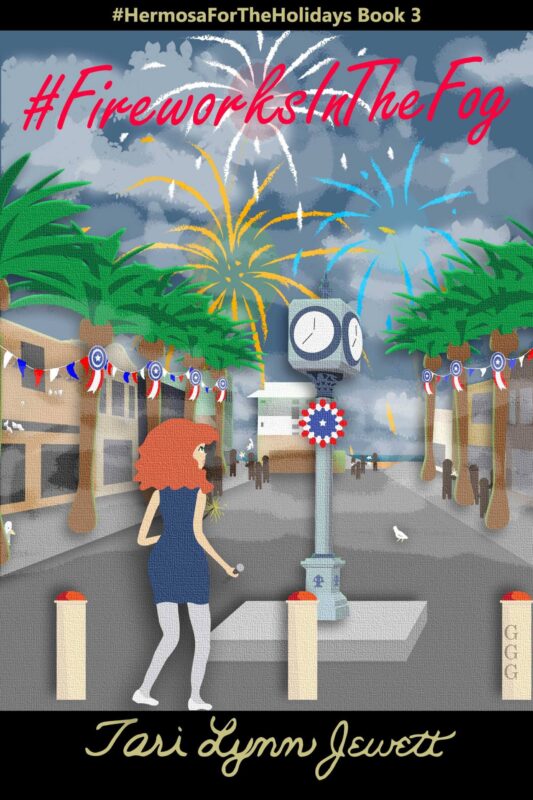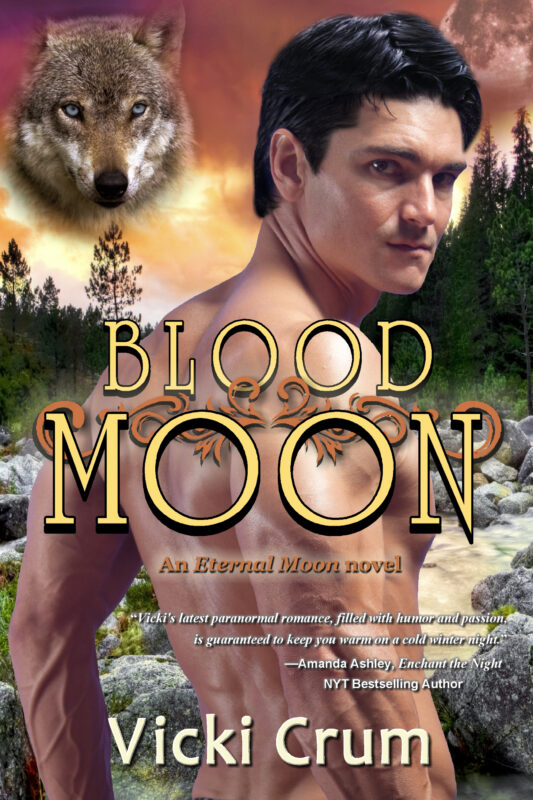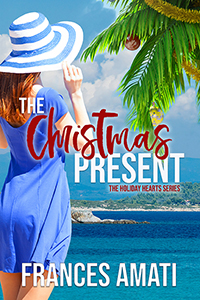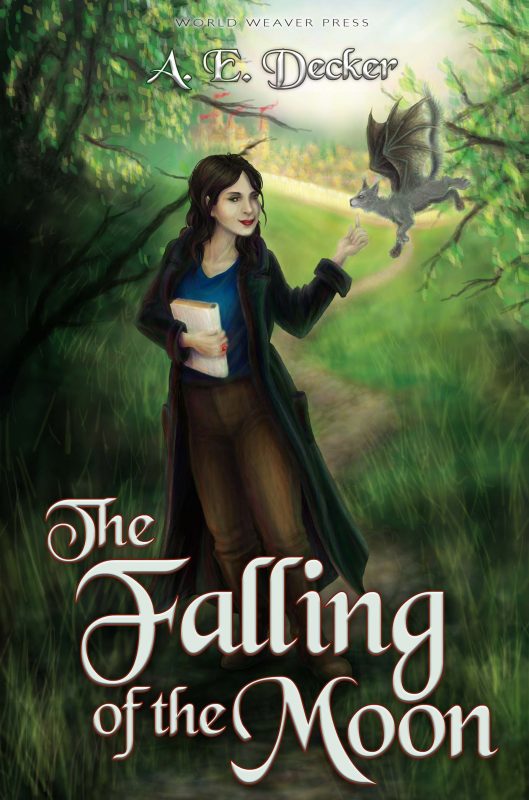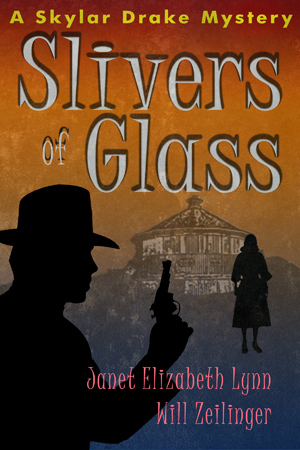Horse Sense for Your Characters with @sdwriter: June @OCCRWA Online Class
May 23, 2017 by Linda McLaughlin in category Online Classes tagged as history, Horse Sense for Your Characters, horses, OCCRWA, research, Shannon DonnellyJune’s OCC/RWA Online Class is Horse Sense for Your Characters
with
Shannon Donnelly
June 12 – July 7
About the Class:
Most folks today have limited experience as mounted riders, even less for side saddle, or driving a carriage, or training a horse for the movements once used by knights. This workshop provides some basic horse sense through the ages so your horses act more like characters who enrich your story and less like cars or other inanimate transportation objects.
We will cover:
- General Horse Sense – Habit and herds: Horse Personality, Basic gaits, Useful Terms
- Carriage and Riding Horses – What’s the difference?
- Quick Trip Through History: Ancient Times, Palfrey/Destrier, The West: Knights of the Plains
- England: Town and Country – Hunting season, ladies’ mounts, side saddle myths, Rotten Row
- Basic Transport – Times, distances, and comfort, public transport of the coaching era
- The Racing World – The sport of Kings; The sport of Queen
- Special Breeds – Arabian, Lippizan, Akhal-Teke, Fresian, Viking’s Horse: Islandic Ponies
Save
About the Instructor:

Shannon Donnelly and Drake
Shannon Donnelly’s writing has won numerous awards, including a RITA nomination for Best Regency, the Grand Prize in the “Minute Maid Sensational Romance Writer” contest, judged by Nora Roberts, RWA’s Golden Heart, and others. Her writing has repeatedly earned 4½ Star Top Pick reviews from Romantic Times magazine, as well as praise from Booklist and other reviewers, who note: “simply superb”…”wonderfully uplifting”….and “beautifully written.”
Her Regency romances can be found as ebooks on all formats, and with Cool Gus Publishing, and include a series of four novellas.
She also has out the Mackenzie Solomon, Demon/Warders Urban Fantasy series, Burn Baby Burn and Riding in on a Burning Tire, and the Urban Fantasy, Edge Walkers. Her work has been on the top seller list of Amazon.com and includes Paths of Desire, a Historical Regency romance.
She is the author of several young adult horror stories, and computer games. She lives in New Mexico with two horses, two donkeys, two dogs, and only one love of her life. Shannon can be found online at sd-writer.com, facebook.com/sdwriter, and twitter/sdwriter.
Enrollment Information
This is a 4-week online course that uses email and Yahoo Groups. If you do not have a Yahoo ID you will be prompted to create one when you join the class, but the process is not difficult. The class is open to anyone wishing to participate. The cost is $30.00 per person or, if you are a member of OCCRWA, $20.00 per person.
http://occrwa.org/classes/june-online-class/
7 1 Read more1950s Life & Times of the Rich and Famous in Los Angeles
May 3, 2017 by Janet Elizabeth Lynn and Will Zeilinger in category Partners in Crime by Janet Elizabeth Lynn & Will Zeilinger, Writing tagged as 1950s, hard-boiled mysteries, history, Hollywood, The Skylar Drake Murder Mystery Series While researching the 1950s, we came across memoirs of Los Angeles. Since our Private Eye character, Skylar Drake, moonlights as a stuntman for the movie industry, the Hollywood scene during that time is an intricate part of each book.
While researching the 1950s, we came across memoirs of Los Angeles. Since our Private Eye character, Skylar Drake, moonlights as a stuntman for the movie industry, the Hollywood scene during that time is an intricate part of each book.
The regular family life of the rich and famous was not at all typical of everyday life. In fact, it was pretty exhausting! The executives were in constant fear of making the wrong decisions and losing their position (lots of backbiting). There were endless days of being “on” for the public. They were forever giving lunches, dinners, and cocktail parties at their homes for celebrities or visiting dignitaries. Their dinners were lavish and beautiful, as were their homes. Entertaining was constant with little private time.
The regular family life of the rich and famous was not at all typical of everyday life. In fact, it was pretty exhaustin g! The executives were in constant fear of making the wrong decisions and losing their position (lots of backbiting). There were endless days of being “on” for the public. They were forever giving lunches, dinners and cocktail parties at their homes for celebrities or visiting dignitaries. Their dinners were lavish and beautiful, as well as their homes. Entertaining was constant with little private time.
g! The executives were in constant fear of making the wrong decisions and losing their position (lots of backbiting). There were endless days of being “on” for the public. They were forever giving lunches, dinners and cocktail parties at their homes for celebrities or visiting dignitaries. Their dinners were lavish and beautiful, as well as their homes. Entertaining was constant with little private time.
I found stories of lunch with Barbara Hutton (heiress of the Woolworth’s chain) at the lavish garden of Merle Oberon, or a candle light dinner at the home of Edie Goetz, (daughter of Louis B. Mayer, co-founder of MGM.) And don’t forget entertaining royalty, moguls, and titans of the day. You couldn’t just throw hamburgers on the BBQ,  whip up a potato salad and lounge by the pool!Tent parties in which the pool was covered to create a dance floor were a regular Saturday night event in Hollywood and Beverly Hills. On Sundays,
whip up a potato salad and lounge by the pool!Tent parties in which the pool was covered to create a dance floor were a regular Saturday night event in Hollywood and Beverly Hills. On Sundays,
Tent parties in which the pool was covered to create a dance floor were a regular Saturday night event in Hollywood and Beverly Hills. On Sundays, church was not like your typical worship services. The Church of the Good Shepherd in Beverly Hills was nicknamed Our Lady of the Cadillacs du e to the expensive cars that filled the parking lot for 10 am Mass.
e to the expensive cars that filled the parking lot for 10 am Mass.
Incorporating Skylar Drake’s assigned visits by his agent or the studio or working security into the stories has been fun. We’ve enjoyed dressing the characters, describing the gardens and homes, and the food served by the rich and famous of Los Angeles, 1950s.
 Janet Elizabeth Lyn
Janet Elizabeth Lyn
My husband, Will Zeilinger and I, co-write the Skylar Drake Murder Mystery series. These hard-boiled tales are based in old Hollywood of 1955. Our third book in the series, Desert Ice, was released in January of this year.
www.janetelizabethlynnauthor.com
http://www.willzeilingerauthor.com
www.themarriedauthors.blogspot.com
2 0 Read moreThe “R” Word… by Isabel Swift
April 24, 2017 by Isabel Swift in category From Isabel Swift tagged as history, romance I thought I’d share a talk I gave on “The Substance of Romance” for the University of Pennsylvania Humanities Forum almost fifteen years ago (October 17th 2002)! I am indebted to Anne Maxwell/Elizabeth Lowell for her ideas included in a talk she gave at a Novelists Inc. conference many years ago. I don’t have the dates, but do know I have internalized her insights on literature/popular fiction and incorporate them here. Hope you enjoy! Isabel Swift
I thought I’d share a talk I gave on “The Substance of Romance” for the University of Pennsylvania Humanities Forum almost fifteen years ago (October 17th 2002)! I am indebted to Anne Maxwell/Elizabeth Lowell for her ideas included in a talk she gave at a Novelists Inc. conference many years ago. I don’t have the dates, but do know I have internalized her insights on literature/popular fiction and incorporate them here. Hope you enjoy! Isabel Swift
The Substance of Romance
I love reading romances. I love reading what might be termed “literary” romances. I love reading romances that are part of what would be defined as “popular fiction.”
Today I will be taking you through: a definition of terms; a brief historical framework of the genre; the wide ranging, broad and successful aspect of romances; criticisms the genre faces. But I plan mostly to focus on the remarkable timeless appeal of the romance genre, how it crosses boundaries of time & culture, how it has changed and continues to change as it continues to grow and thrive
So what is a romance? It is a work of fiction where the focus of the story is on the developing relationship between two people. The story’s climax resolves it and delivers a sense of emotional “justice” and satisfaction.
As with any genre, there must be essential narrative elements, or it’s not a romance: The center of the story is a love story with an emotionally satisfying ending. Archetypic narrative elements broadly include 5 things: Meeting; Attraction; Barrier; Destruction of barrier; Declaration.
In a tale well told, the destruction of that barrier frees the characters from their constraints. It empowers them to choose; it enables them to act, and the reader rejoices.
The genre is a diverse one, with many sub-genres, from contemporary to historical romances: Sexy, Sweet, Suspense, Paranormal, Humorous, Fantasy, Inspirational, Western, Regency…the possibilities are endless and endless possibilities have been explored. Romances have a universal and timeless appeal.
There is no unanimously agreed upon “first” romance, though romantic texts have been cited as early as the 4th Century B.C. The crusades, Arabian fables & chivalry all incorporate elements of romance. But in 1740 Samuel Richardson’s PAMELA delivered a clear romance novel and a best-selling one at that (interestingly beloved of both men & women at the time). In Clara Reeve’s Progress of Romance (1785) she notes that: Novels were seen as “pictures of real life and manners, and of the times in which they were written.” Whereas romances used “lofty and elevated language, describing what has never happened, nor is likely to.”
Some of what we see now as “overblown” prose clearly springs from this historical vision of romance. Henry Fielding (1707-1754) an 18th Century kind of guy who wrote a take-off on PAMELA— SHAMELA scorned romances. Sir Walter Scott (1771-1832) a 19th Century type of guy and a “romantic” scorned a novelist like Jane Austen (1775-1817). But both Scott and Austen wrote romances —one wrote larger than life stories, drawn on a sweeping canvas; one more intimate tales, realistic and of the times.
Romances, in general, represent over half adult popular mass market fiction, depending on your definition of “romance.” It was a 1.5 billion dollar industry last year (2001), with more than 2,000 titles released. 50 million women in North America read romances. Clearly romances are a vital element of our lives and in our literature. The stories cross cultures. They cross centuries. They continue to have phenomenal appeal.
While I want to focus on exploring that appeal, I did want to respond to some of my favorite criticisms of the genre: I must note that almost all criticisms are voiced by people who declare, without shame, I might add, that they’ve never actually read any romances. Interestingly, they do not see this fact as a disqualification for an opinion!
There’s the “pornography” one, which I can’t imagine anyone who has ever read a romance lending any credence to. The essence of a romance is about the unique rightness of uniting these particular two people and the challenges they face in creating a good partnership. The stories are about both the emotional and physical connection, body and soul. Some romances are certainly sexy, but the physical is always in the context of a connection between two unique people.
Romances are sometimes faulted for having romantic conventions and being part of a genre. Like Homer (and I feel that one could convincing argue that the Odyssey is a quintessential romance) and the Homeric epithet, these familiar elements are ways the teller of the tale communicates to her reader that she is in a genre, a world both familiar and new. While humans can enjoy change and uncertainty, many also enjoy elements in their life that can be depended on and are relaxing. The issue of “sameness” is the point, not the problem. If we turned some of these principals to, say, sports, I think we’d find some interesting commonalties and insights.
162 baseball games every year—year after year. Football, basketball, hockey, all are much the same. Same number of players, same positions. Now isn’t that boring? Don’t guys get tired of it? Don’t they wish everyone just switched places every inning or so? Or we added a few players? Or took some away? Just think of what the response would be to that. Outrageous! Absurd! It wouldn’t be baseball! (or football, or whatever). By the same token, a romance without the essential elements would not be a romance, it would not deliver the key elements that inspired the reader to select that genre and that story to begin with.
People decide to watch a basketball game because they want to watch a certain number of players of a particular sex play in a specific setting under a clear set of rules. And even within basketball, viewers are highly specific, many preferring to watch only professional or college or women’s basketball (or whatever). The rules are different; it’s a more exciting game, or less political (or whatever). Now that seems to me to be a fairly rigidly codified entertainment viewing experience, doesn’t it? Yet those same viewers express surprise at hearing similar types of preferences voiced with reading romances. Go figure.
With the sports viewing experience one could argue it is the suspense of finding out who wins that makes each game interesting. But the fact is that some people enjoy suspense, I really don’t.
Romance readers enjoy reading about relationships; they are interested in how the relationship puzzle is worked out. We read because we are optimistic, and we enjoy the genre’s assurance that sometimes things work out for the best. We believe in the positive power of love and in its ability to overcome obstacles. It gives us strength and hope as we face our own lives and the world we live in. In the stories the heroine, and she is a heroine, not a “protagonist” has a right to find happiness. She must discover what that means for her, which is often a process of self discovery and self acceptance. She must also have the courage to go after it. And happiness may not be what is expected.
Romances are usually by, for and about women. The heroine is the center, it is her story. They are stories of empowerment, stories where women succeed, her values are confirmed, her beliefs are validated. Ultimately, love is seen as a vitally important ingredient to life by both sexes. And all are worthy of love. But before hero or heroine can surmount the “barrier” they each must become a more complete and whole person. Strong enough to partner with another, to love and be loved.
And who does not want to be loved, valued and appreciated for who we are? Most also want to grow, succeed and be challenged to be more. Romances celebrate the commonalties and the differences, and each story strives to find that resonant middle ground. Romances explore the compromises we must make to live with others. To understand what are reasonable accommodations, and what are not. They remind us of the challenges of building a relationship, but also the triumphs.
It is hard to live with others and to share! But these are skills we need to work on as humans, we only have to look at the news to understand why.
Ideally the process of the romance story is the alignment of the yin/yang and the expression of the reverse circle in each, black within white, white within black, Jung’s animus and anima. The partnership allows a balance between hero and heroine, freeing the woman to be more independent, sexual, confident; freeing the man to be more vulnerable, emotional, capable of compromise. The whole becomes greater than the sum of its parts and forms the basis for a partnership, a family.
One could divide literature through the ages into tragedy or comedy: Tragedy: usually political, focused on power, often pessimistic, and ends in death. Comedy: focuses on social issues; optimistic, often ends in marriage, a celebration of life.
Romances have a positive, life affirming resolution, a HEA (Happily Ever After). Love stories, or stories with romantic elements don’t necessarily.
If we look at Shakespeare’s tragedies & comedies: Romeo and Juliet, though an intensely romantic love story is, of course, one of his tragedies because they all die. His romances, the Tempest being the best known, ends in marriage & his comedies do too.
Tragedies force us to face our mortality, a difficult, but necessary lesson. Works that address this are often deemed literature. The comic genre has a much harder time catching that “literary” brass ring, but they serve to remind us why it is we are happy to be alive, and why we’d rather not die, though we know we must.
Romances are stories that are meant to be entertaining. They aren’t how-to manuals for life, but they express a belief in life’s possibilities and the potential for chang, even if it is only change within. Romances make you feel good.
Romances authors usually start out or become readers. Their goals are to give back to their readers the pleasure they got from reading. They work to make the reading experience as enjoyable as possible. I don’t think anyone asks how many calories you’ve burned or weight you’ve lost going to the movies, you go to the gym for that! Romance writer’s desire is to entertain, not exercise. Everyone should feel empowered to take some time for pure enjoyment, to relax, refresh and center themselves, whatever that means to them.
Romances remind us of the world’s possibilities and the belief that partnerships, though difficult to establish and maintain, are possible, and can deliver remarkable benefits.
The romance genre springs from universal myths, tales and legends: the moral lessons, quests and the struggle between Good and Evil. Romances celebrate the ability of hero and heroine to have courage and compassion, to challenge themselves, to perservere and transcend obstacles, both real and metaphorical, through the power of love.
And I think we should continue to nurture and cherish those beliefs, now more than ever.
5 0 Read moreTwilight Zone Day, Time Travel, and Me by Jina Bacarr
May 11, 2016 by Jina Bacarr in category Jina’s Book Chat tagged as Civil War, Confederate, Confessions of a Podcast Goddess, history, medical drama, medicine, rebel, Rod Serling, romance, time travel, Twilight Zone, UnionTwilight Zone.
Did you hear the eerie music when you read the title?
Two of my favorite TZ episodes dealt with time travel.
Civil War.
And medicine.
Cliff Robertson in “A Hundred Years Over the Rim” (a father time travels to the future to save his ill son with modern medicine) and Kevin McCarthy in “Long Live Walter Jameson.” (check out an interesting filming note on this one). A professor knows history better than he should because “he was there.”
When I set out to write my Civil War romance, LOVE ME FOREVER, these two TZ episodes crept into my story line in a fun and interesting way: my time traveling heroine is a part time EMT and history teacher; she helps the Union Army physician hero in his fight against “germs” and how to combat disease back in 1862.
And yes, she knows exactly when the battles take place and does her best to save lives. But can she change history? If she does, will she lose the man she loves?

How do TV shows affect your writing?
Do shows we loved as kids have an even more powerful effect on our writing?
I think so.
LOVE ME FOREVER is proof of that.
What TV shows have affected your writing?
I’d love to hear your thoughts!
Till next time…
Jina
Civil War time traveler, belle…and spy: Love Me Forever from Jina Bacarr on Vimeo.
She was an imposter – a time traveler back to the Civil War in 1862 from Jina Bacarr on Vimeo.
jinabacarr.com
jinabacarr.wordpress.com
twitter.com/jinabacarr
facebook.com/JinaBacarr.author
pinterest.com.jbacarr
The Law Is a Ass: Women’s History and the Law @LyndiLamont
September 16, 2014 by Lyndi Lamont in category The Romance Journey by Linda Mclaughlin tagged as divorce, England, history, Linda McLaughlin, marriage, research, women's history“If the law supposes that,” said Mr. Bumble,… “the law is a ass—a idiot. If that’s the eye of the law, the law is a bachelor; and the worst I wish the law is that his eye may be opened by experience—by experience.”
The quote above is generally attributed to Charles Dickens, Oliver Twist, published serially 1837-39, per Bartleby though Dickens may have copied it from a 17th century play, Revenge for Honour by George Chapman. (See http://www.phrases.org.uk/meanings/the-law-is-an-ass.html) Whatever the origin of the phrase, it makes a fair point. (The word ass, of course, refers to a donkey.)
Nineteenth-century women were likely to agree with Mr. Bumble, when one considers the treatment of women under the laws of the period. I covered a bit of this during my recent talk on Herstory at Orange County RWA in August, though women weren’t the only people treated badly by the law. The nineteenth century saw a number of reform movements, from abolitionism to the fight for women’s suffrage. The latter was kicked off in July 19-20, 1848 in Seneca Falls, N.Y. The first two resolutions passed at the convention concern legal matters:
Resolved, That such laws as conflict, in any way, with the true and substantial happiness of woman, are contrary to the great precept of nature, and of no validity; for this is “superior in obligation to any other.
Resolved, That all laws which prevent woman from occupying such a station in society as her conscience shall dictate, or which place her in a position inferior to that of man, are contrary to the great precept of nature, and therefore of no force or authority.
It wasn’t just that women weren’t allowed to vote, though that was a primary focus for reform. For several centuries, a legal practice called coverture was in place in England and the U.S. whereby a woman gave up all rights when she married. Her husband controlled any money or property she brought to the union. Single women, including widows, could own property and enter into contracts without male approval. Thanks to suffragist activism, laws were passed abolishing this practice in the late 19th century.
Current law is confusing enough, but when you’re writing historical romance, the law can be a veritable minefield of potential blunders. Research your time period and location if legal matters play a part in your plot. What kind of legal system was in place at the time? English common law, the Napoleonic Code, church canonical law? In the U.S., laws vary from state to state, but that isn’t always the case in other countries.
British laws were enforced throughout England and Wales, but didn’t necessarily apply to Scotland. For instance, in the 18th and early 19th centuries, the age of consent for marriage was substantially lower in Scotland than the one-and-twenty years required in England, encouraging couples without parental approval to elope across the border. The Gretna Green marriage is common plot device in Regency romances. The 1753 Marriage Act was also the first law to require a formal ceremony. It also required weddings to take place in the morning, hence the wedding breakfast to follow.
Getting out of a marriage was even more difficult. Prior to the mid-19th century when judicial divorce was authorized, it was extremely difficult if not impossible to get a divorce in Britain. In Regency times, one had to petition Parliament for a divorce. Can you imagine having to ask Congress to agree to let someone divorce? Yikes! Even then it was more like a legal separation than a true divorce. Annulments weren’t necessarily easy to obtain either. A law permitting judicial divorce, the Matrimonial Causes Act, finally passed in 1857.
More information on marriage and divorce laws can be found at these sites:
A Brief History of Marriage: Marriage Laws and Women’s Financial Independence by
Karen Offen
Kelly Hager, “Chipping Away at Coverture: The Matrimonial Causes Act of 1857”
Linda McLaughlin
0 0 Read moreAffiliate Links
A Slice of Orange is an affiliate with some of the booksellers listed on this website, including Barnes & Nobel, Books A Million, iBooks, Kobo, and Smashwords. This means A Slice of Orange may earn a small advertising fee from sales made through the links used on this website. There are reminders of these affiliate links on the pages for individual books.
Search A Slice of Orange
Find a Column
Archives
Featured Books
#FIREWORKS IN THE FOG
So, you’d like to become a social media star…
More info →THE CHRISTMAS PRESENT
HOW FAR WOULD YOU GO TO PROTECT THE ONES YOU LOVE?
More info →THE FALLING OF THE MOON
In the gloomy mountains of Shadowvale, Ascot Abberdorf is expected to marry a somber Count and settle down to a quiet life terrorizing the villagers.
More info →
SLIVERS OF GLASS
Southern California 1955: the summer Disneyland opened, but even "The Happiest Place on Earth" couldn't hide the smell of dirty cops, corruption and murder.
More info →Newsletter
Contributing Authors
Search A Slice of Orange
Find a Column
Archives
Authors in the Bookstore
- A. E. Decker
- A. J. Scudiere
- A.J. Sidransky
- A.M. Roark
- Abby Collette
- Alanna Lucus
- Albert Marrin
- Alice Duncan
- Alina K. Field
- Alison Green Myers
- Andi Lawrencovna
- Andrew C Raiford
- Angela Pryce
- Aviva Vaughn
- Barbara Ankrum
- Bethlehem Writers Group, LLC
- Carol L. Wright
- Celeste Barclay
- Christina Alexandra
- Christopher D. Ochs
- Claire Davon
- Claire Naden
- Courtnee Turner Hoyle
- Courtney Annicchiarico
- D. Lieber
- Daniel V. Meier Jr.
- Debra Dixon
- Debra H. Goldstein
- Debra Holland
- Dee Ann Palmer
- Denise M. Colby
- Diane Benefiel
- Diane Sismour
- Dianna Sinovic
- DT Krippene
- E.B. Dawson
- Emilie Dallaire
- Emily Brightwell
- Emily PW Murphy
- Fae Rowen
- Faith L. Justice
- Frances Amati
- Geralyn Corcillo
- Glynnis Campbell
- Greg Jolley
- H. O. Charles
- Jaclyn Roché
- Jacqueline Diamond
- Janet Lynn and Will Zeilinger
- Jaya Mehta
- Jeannine Atkins
- Jeff Baird
- Jenna Barwin
- Jenne Kern
- Jennifer D. Bokal
- Jennifer Lyon
- Jerome W. McFadden
- Jill Piscitello
- Jina Bacarr
- Jo A. Hiestand
- Jodi Bogert
- Jolina Petersheim
- Jonathan Maberry
- Joy Allyson
- Judy Duarte
- Justin Murphy
- Justine Davis
- Kat Martin
- Kidd Wadsworth
- Kitty Bucholtz
- Kristy Tate
- Larry Deibert
- Larry Hamilton
- Laura Drake
- Laurie Stevens
- Leslie Knowles
- Li-Ying Lundquist
- Linda Carroll-Bradd
- Linda Lappin
- Linda McLaughlin
- Linda O. Johnston
- Lisa Preston
- Lolo Paige
- Loran Holt
- Lynette M. Burrows
- Lyssa Kay Adams
- Madeline Ash
- Margarita Engle
- Marguerite Quantaine
- Marianne H. Donley
- Mary Castillo
- Maureen Klovers
- Megan Haskell
- Melanie Waterbury
- Melisa Rivero
- Melissa Chambers
- Melodie Winawer
- Meriam Wilhelm
- Mikel J. Wilson
- Mindy Neff
- Monica McCabe
- Nancy Brashear
- Neetu Malik
- Nikki Prince
- Once Upon Anthologies
- Paula Gail Benson
- Penny Reid
- Peter J Barbour
- Priscilla Oliveras
- R. H. Kohno
- Rachel Hailey
- Ralph Hieb
- Ramcy Diek
- Ransom Stephens
- Rebecca Forster
- Renae Wrich
- Roxy Matthews
- Ryder Hunte Clancy
- Sally Paradysz
- Sheila Colón-Bagley
- Simone de Muñoz
- Sophie Barnes
- Susan Kaye Quinn
- Susan Lynn Meyer
- Susan Squires
- T. D. Fox
- Tara C. Allred
- Tara Lain
- Tari Lynn Jewett
- Terri Osburn
- Tracy Reed
- Vera Jane Cook
- Vicki Crum
- Writing Something Romantic
Affiliate Links
A Slice of Orange is an affiliate with some of the booksellers listed on this website, including Barnes & Nobel, Books A Million, iBooks, Kobo, and Smashwords. This means A Slice of Orange may earn a small advertising fee from sales made through the links used on this website. There are reminders of these affiliate links on the pages for individual books.




